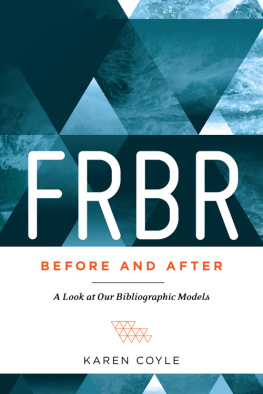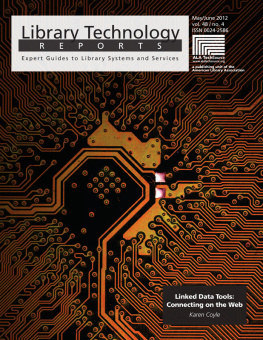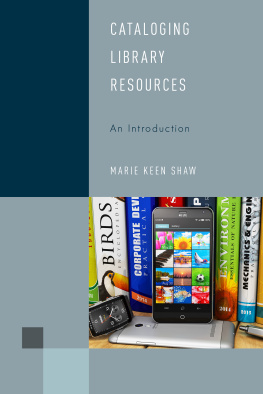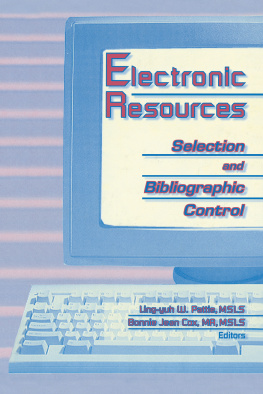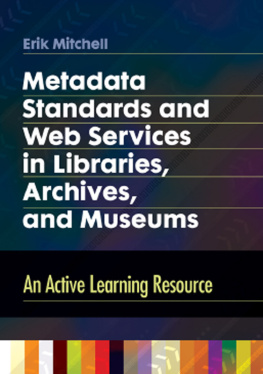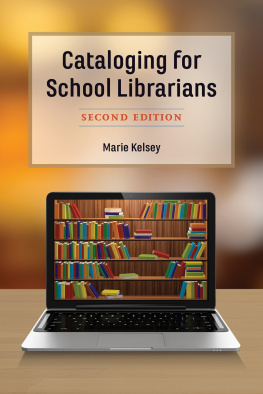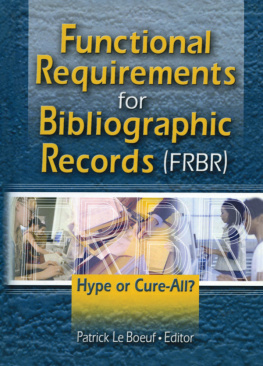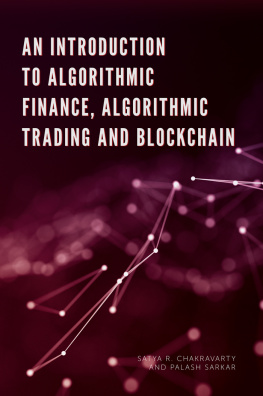Karen Coyle - FRBR, Before and After: A Look at Our Bibliographic Models
Here you can read online Karen Coyle - FRBR, Before and After: A Look at Our Bibliographic Models full text of the book (entire story) in english for free. Download pdf and epub, get meaning, cover and reviews about this ebook. year: 2015, publisher: American Library Association, genre: Romance novel. Description of the work, (preface) as well as reviews are available. Best literature library LitArk.com created for fans of good reading and offers a wide selection of genres:
Romance novel
Science fiction
Adventure
Detective
Science
History
Home and family
Prose
Art
Politics
Computer
Non-fiction
Religion
Business
Children
Humor
Choose a favorite category and find really read worthwhile books. Enjoy immersion in the world of imagination, feel the emotions of the characters or learn something new for yourself, make an fascinating discovery.
- Book:FRBR, Before and After: A Look at Our Bibliographic Models
- Author:
- Publisher:American Library Association
- Genre:
- Year:2015
- Rating:3 / 5
- Favourites:Add to favourites
- Your mark:
- 60
- 1
- 2
- 3
- 4
- 5
FRBR, Before and After: A Look at Our Bibliographic Models: summary, description and annotation
We offer to read an annotation, description, summary or preface (depends on what the author of the book "FRBR, Before and After: A Look at Our Bibliographic Models" wrote himself). If you haven't found the necessary information about the book — write in the comments, we will try to find it.
FRBR, Before and After: A Look at Our Bibliographic Models — read online for free the complete book (whole text) full work
Below is the text of the book, divided by pages. System saving the place of the last page read, allows you to conveniently read the book "FRBR, Before and After: A Look at Our Bibliographic Models" online for free, without having to search again every time where you left off. Put a bookmark, and you can go to the page where you finished reading at any time.
Font size:
Interval:
Bookmark:
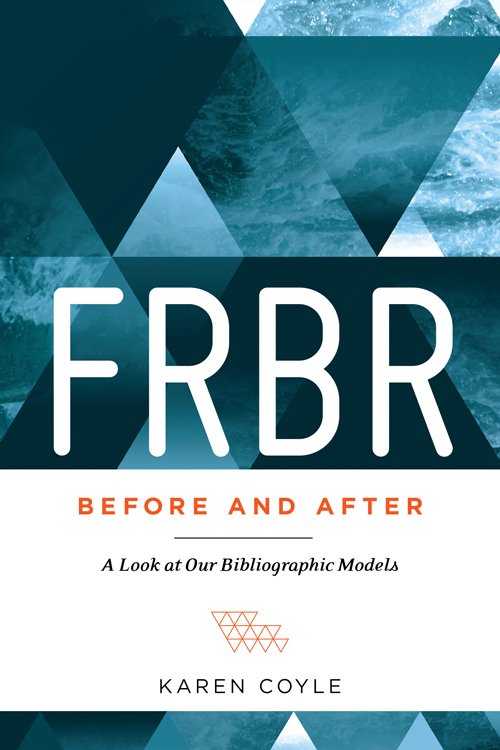
ALA Editions purchases fund advocacy, awareness, and accreditation programs for library professionals worldwide.
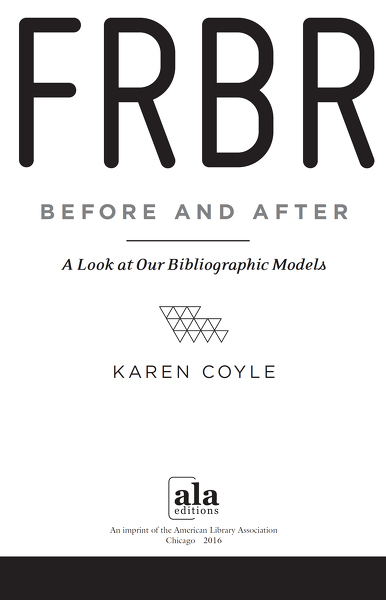
KAREN COYLE is a librarian with over 30 years experience with library technology, who serves as consultant on a variety of issues relating to digital libraries. She has published dozens of articles and reports, many of which are available at kcoyle.net. She has served on several standards committees, including the MARC standards group (MARBI) and the NISO committee AX for the OpenURL standard, and was an ALA representative on the e-book standards development team that contributed to the ePub standard. She writes and speaks on a wide range of policy areas, including intellectual property, privacy, and public access to information. Her January 2010 issue of Library Technology Reports, Understanding the Semantic Web: Bibliographic Data and Metadata, was awarded the 2011 ALCTS Outstanding Publication Award.
2016 by Karen Coyle
Extensive effort has gone into ensuring the reliability of the information in this book; however, the publisher makes no warranty, express or implied, with respect to the material contained herein.
ISBNs
978-0-8389-1345-1 (paper)
978-0-8389-1364-2 (PDF)
978-0-8389-1365-9 (ePub)
978-0-8389-1366-6 (Kindle)
Library of Congress Cataloging-in-Publication Data
Coyle, Karen, author.
FRBR, before and after : a look at our bibliographic models / Karen Coyle.
pages cm
Includes .
ISBN 978-0-8389-1345-1 (print : alk. paper) ISBN 978-0-8389-1365-9 (epub) ISBN 978-0-8389-1364-2 (pdf) ISBN 978-0-8389-1366-6 (kindle) 1. FRBR (Conceptual model) I. Title.
Z666.6.C69 2016
025.3'2dc23
2015020100
Cover design by Kimberly Thornton. Image Shutterstock, Inc.
I want to thank Patrick Hogan of ALA Publishing for his willingness to experiment with an open access model for this book. A digital version is available at my web site, http://kcoyle.net. I hope, however, that many of you will find the convenience of hard copy worthwhile so that ALA Publishing will be encouraged to do this for other works in the future.
I thank Lynne Cameron for reading through the manuscript and making many highly valuable suggestions. (All remaining errors of fact are, of course, mine.) My conversations and collaboration with Tom Baker have been instrumental to my understanding of FRBR and its relation to RDF. This book began as a series of sketchy and perhaps poorly worded online postings; these brave souls read and commented on that: Kevin M. Randall, Lukas Koster, Heidrun Wiesenmller, Amanda Cossham, and Joel Kalvesmaki. I hope I did not miss anyone.
Finally, I give thanks to Dewey the Decimal Dog, otherwise known as Dewey 636.7, whose job it was to get me out of my chair and away from the computer at regular intervals. Theres nothing like an enthusiastic golden retriever with a tennis ball in his mouth to remind you that there is more to life than FRBR.
G o to your bookshelf and pull off a book; any book. It may be one you have read many times, or it could be one that is still on your to read list. Take a look at it. It may be bound with the flimsy cardboard of a paperback sporting a slick, shiny cover. Or the pages could be held between the cloth-covered boards of a quality hardback. It is unlikely, however, unless you are either very wealthy or very lucky, that your fingers will be touching a fine leather binding.
It is probable that you did not purchase the book for its physical appearance, as appealing as that may be, but for its content. Thats where things get complicated in our story: complicated because it is very hard to say what the content consists of. Words, yes, but you didnt buy just a set of words, unless your book is a dictionary. No, you bought this book for the story it tells or for the information it imparts. You may have been seeking entertainment, or to learn something new (and happy is the person who gets both!). Although the story or the information came to you as words, you may not be able to recite even a small passage verbatim. We read the words but we remember the meaning, another concept that is difficult to define.
If I ask you some questions about the book, some will be easy to answer, some more difficult. I could ask you for the title, and most likely you know that. The same for the author. You could surely tell me what the book is about, either with a topic (its a history of the Venetian Republic) or a story (its about a girl who lives on the prairie and what she and her family go through to survive). Chances are, though, that if I ask you who published the book, youll be taking a sneak peek at the title page or the spine to find that information. The place and date of publication will not only be less imprinted in your consciousness but they may actually be a bit hard to find. The precise number of pages is another undeniable fact about the book that may not be on the tip of your tongue.
As a reader, it is the reading experience and what it leaves behind in your memory that makes up the inherent value of the book. And we do know that readers value their books. There would be no other reason to use the bulk of the wall space of ones home for shelves for book storage, or, when moving to a new home, to pack, lug, and unpack untold pounds of what appears to be inert tree pulp.
Now lets leave books behind and look at other media. Just as many of us love our books, we also have among us many music lovers; people with towering racks of CDs or digital devices chock full of tunes. Here, though, we find some differences from our book story. Ask a music lover the author (composer) of a tune and you may be asking the obvious (Beethovens 5th symphony) or not (Santa Claus Is Coming to Town), even though both pieces of music are easily recognizable when heard. They are recognizable also because, unlike books, we listen to the same piece of music many times, and in different versions. This is a function of the fact that music is performed. Some performances are faithful interpretations of the music, and others, like jazz or digital sampling, are creative distortions of the original.
Music lovers with sufficient talent can reproduce a version of the music either by humming, singing, or playing the music on an instrument. We remember the notes of music in a way that we do not remember the words of a book. But if asked what the music is about we are in some difficulty in most cases. Unless the music has a specific story attached to it, such as Sergei Prokofievs Peter and the Wolf, or the teen drama of Dead Mans Curve, much music does not have a plot or a message that translates to aboutness.
Other information that only dedicated aficionados of a music genre can relate about their listening choices are date of recording; names of all performers; date of composition; number and types of instruments. Asked what type of music we like, the answers are broad categories like rock, jazz, classical, or country; or sometimes a more specific category, still covering a wide swath: heavy metal; mostly Mozart; Irish folk music; Reggae.
Books and music are two common creative forms that many of us encounter in our everyday lives, and yet what we know about them and how we interact with them are quite different. Now lets look at another creative form: computer games. A player will know the name of the game, the general plot of the play (capture castle, defeat enemy, solve puzzle), and the names of characters. She will also know what capabilities she has as a player (running, jumping, opening doors). If it is a multi-player game, she will know the names of other playersthat is, the names they are using in the game. She may not, however, be able to respond to the question who wrote or created the game? Games often do not have measurable durations although some have ending points, so asking how long is it? may not make sense.
Font size:
Interval:
Bookmark:
Similar books «FRBR, Before and After: A Look at Our Bibliographic Models»
Look at similar books to FRBR, Before and After: A Look at Our Bibliographic Models. We have selected literature similar in name and meaning in the hope of providing readers with more options to find new, interesting, not yet read works.
Discussion, reviews of the book FRBR, Before and After: A Look at Our Bibliographic Models and just readers' own opinions. Leave your comments, write what you think about the work, its meaning or the main characters. Specify what exactly you liked and what you didn't like, and why you think so.

